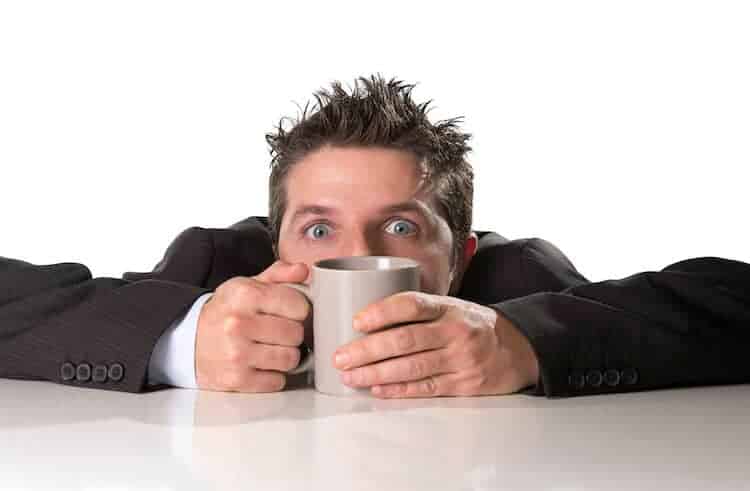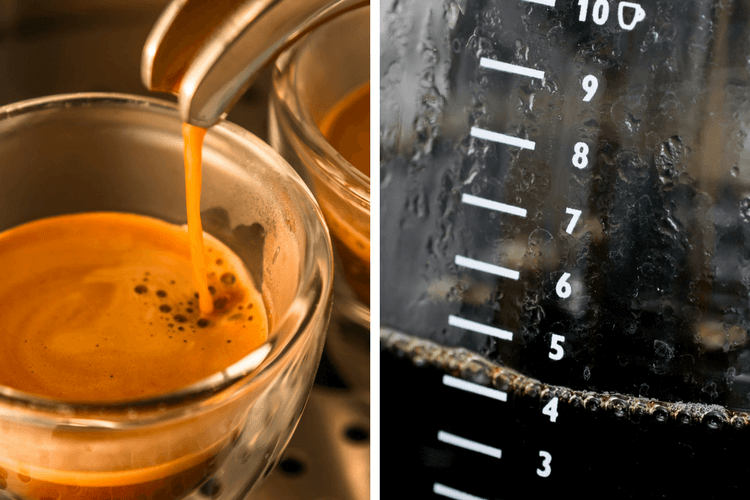What Type Of Coffee Has The Most Caffeine?

Sometimes you just need a kick in the pants. You reach, bleary-eyed, for a mug of your favorite brew, hoping a strong dose of coffee will start your morning or get you through a long afternoon.
Other times you want to minimize your caffeine intake. Perhaps it’s later in the day, and you don’t want to have a night of fitful sleep. Or maybe you’re trying to decrease your dependence on the world’s most delicious stimulant.
In either case, do you reach for light roast or dark roast? Espresso or drip coffee? Do you know which coffee roast or brewing method has the most caffeine? The answers might surprise you, so read on to learn how your coffee preferences affect your daily caffeine intake.
Roasting Methods and Caffeine: Dark vs Light
Many coffee drinkers, both casual sippers and enthusiasts, believe that the amount of caffeine in their favorite mug depends on what type of roast they brew. This is true, but it doesn’t make as big a difference as you might think.
Dark Roasts
You might assume that the darker roasts have more caffeine. And it makes sense on the surface.
We often say that darker roasts are “stronger” because of the bold taste that darker brews deliver. They are generally more intense while the lighter roasts have floral or citrusy overtones. For many, that translates to “weaker” coffee.
These differences only apply to the flavors, though. Darker roasts do not contain more caffeine than light roasts. If anything, they have less.
Light Roasts
How can lighter roasts have more caffeine?
Coffee drinkers with a little more knowledge about the bean suggest that the roasting process burns off some of the caffeine. Since darker blends are roasted for longer, the argument goes, they lose more of their caffeine content.
This is almost right. The roasting itself actually removes very little of the caffeine because it’s a very stable compound.
Instead, what happens is that the beans expand during roasting. Beans that have been roasted for a longer time lose more water, growing larger and less dense. Thus, if you measure your coffee by volume, the lighter roast will have more beans.
More beans means more caffeine. The difference is minimal, though. And if you measure your coffee by weight, there is no difference in the caffeine amount in light and dark roast coffee.
So when choosing your roast, base your decision on taste preferences rather than the amount of caffeine they might have. The difference isn’t enough to warrant a change.
Brewing Method
If the roast difference is small, what about brewing method? Does a shot of espresso have more caffeine than a mug of drip coffee?
The caffeine amount extracted during the brew does change depending on the method. But again, it might not be what you think.
As a general rule, the longer the brewing method, the more caffeine you should expect per serving. The key here is that this is per serving.
According to Kicking Horse Coffee, a single one-ounce shot of espresso has around 40 milligrams of caffeine. And a 12 oz mug of drip has around 120 milligrams.
So in an ounce to ounce comparison, espresso is much stronger (40 milligrams vs 10 milligrams per ounce). But we don’t typically consume 12 ounces of espresso as a single serving. That means that in a single serving, you’ll get more caffeine in a cup of drip than a shot of espresso.
Cold brew coffees often have more caffeine than drip coffee, in part because they are typically made with a higher coffee/water ratio. This can depend on how you brew, and how much you dilute it, which can change a lot from person to person.
When it comes to your brewing method, you should probably still make your decision based on your taste preferences. And remember that a double shot of espresso has around the same amount of caffeine as an 8 oz cup of coffee.
Caffeine and the Beans: Robusta vs Arabica
This is where the real difference is. When deciding which beans to use, you have one big choice to make: Arabica or Robusta.
Robusta Beans
The typical Robusta bean has nearly twice as much caffeine as Arabica (and some have nearly four times as much). Robusta is cheaper to cultivate, and the higher caffeine content means it is more resistant to pests. So you will usually find these beans in cheaper blends and instant coffee.
Don’t expect a great flavor profile though. Robusta has a more bland and bitter taste. (In part because the extra caffeine adds some bitterness.)
Some espresso blends still have a small quantity of Robusta, but otherwise, you probably won’t encounter it if you are shopping for quality coffee.
Unless, that is, you are actively seeking a high-caffeine coffee. So your gas station brews that promise a quick jolt in the morning are often made from Robusta. That’s why they’re cheap and effective.
Arabica Beans
Because of the lower quality flavor of Robusta coffee, most coffeehouses and roasters stick with Arabica beans. It provides more complex flavors and can deliver better results for light, medium, and dark roasts.
Much of this complexity comes from the lower caffeine content. With about half as much caffeine as Robusta beans, Arabica is not as bitter.
If you’re going strictly for the stimulating properties of coffee, then, look for a Robusta coffee. It packs more punch, but you will likely notice a difference in quality. And you’ll probably need to search a bit for a quality bag of beans as most roasters stick to Arabica beans.
Pay attention when choosing, though, as you can find extremes on both ends.
Death Wish Coffee, for example, is an Arabica blend with just a touch of Robusta. But it is built for caffeine, with as much kick per ounce as your typical espresso. The company bills it as “The World’s Strongest Coffee.”
What about Decaf?
You would think this one is fairly straightforward. Decaffeinated coffee doesn’t have caffeine, right?
Well, almost.
Decaffeinated coffee has been treated before roasting, typically with water, carbon dioxide, or solvents, to remove most of its caffeine. But it is not completely caffeine free.
Decaf usually has around 97 percent of its caffeine removed. For an eight ounce cup, you can expect from five to ten milligrams, depending on the beans and the removal process.
That isn’t enough that you’ll notice. But if you need to remove caffeine from your diet completely, you can’t just switch to decaf. You’ll have to forego coffee altogether (sorry).
Takeaway
There are many misconceptions about the amount of caffeine in different types of coffee. Most of these myths sound plausible, so it’s easy to get confused.
Just remember: the roast plays only a minor role; the brewing method can make a difference; and the choice between Robusta and Arabica is the major factor.



